It has become something of a January ritual of mine to sit down and write a post for you about the stars of my winter garden and to include a selection of photos taken in previous years whilst I wait for this years flowers to arrive. These elegant hellebores undoubtedly steal the show every winter and each time I start to write about them I realise that my love for these wintery blooms has grown even greater than it was in the previous year.

What other flower blooms at the bleakest point of the year in so many beautiful shades from darkest black to deepest plum to fresh apple green and primrose yellow through to the palest of pinks and pristine whites. Hellebores have beautiful drooping heads of single and double flowers which reveal the most exquisite markings when lifted up. These flowers are in bloom for at least 3 full months of the year - the first flowers of H. niger (the Christmas rose) appear around Christmas to be followed in late January by H. orientalis (the Lenten rose) and they are still going well into April.
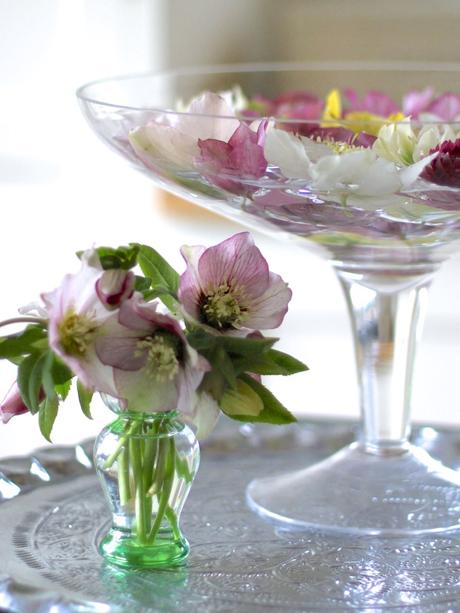
If the beautiful flowers and long flowering period have not tempted you to add hellebores to your garden what about the ease of growing? These plants are very forgiving - surviving in anything from a dry shady spot under deciduous trees to a patch in full sun. Historically hellebores have been recommended for woodland gardens as they grow well in dappled shade but my most successful clumps, which produce masses of flowers every year, actually grow in full sun. After the beauty of the flowers is over, the leaves make a very elegant foliage plant until late autumn when they start to collapse and are often covered in black spots. There is no need to worry though - just chop off all the old foliage to reveal the new season flowers and in no time at all a fresh crop of leaves will emerge to last you through another gardening year. Like peonies the clumps of hellebores will increase in size every year, giving you even more flowers and they also self seed prolifically so extra plants are easy to obtain. Added to that being poisonous they are one of the few plants in my garden that are not attractive to deers or rabbits.
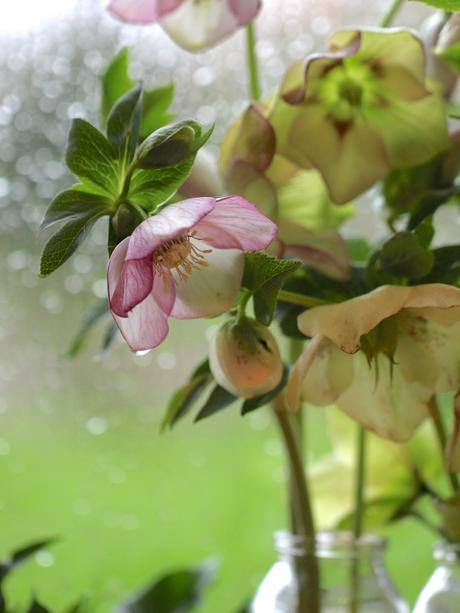
Still not convinced? How about hellebores as a cut flower? At a time of year when flowers to cut are scarce in the garden, hellebores will be your saviour. Cut them on short stems and fill a multitude of small vases to decorate a mantel or window ledge, or keep the stems long and let the beautiful flowers tumble out of urns and jugs to provide a stunning centrepiece for a table or dresser. Hellebores can start to droop very quickly when included in an arrangement but if you can cut the stems very short when they start to droop and float the flowers in a large low bowl of water you can appreciate the beauty of their markings for at least another 5 days - 2 arrangements from 1 cutting! Generally I find the doubles last longer as cut flowers than the singles - searing the stems before arranging can also help - just submerge the freshly cut stems in just boiled water for 20 seconds and immediately place them into your arrangement. The flowers will last much longer after cutting later in the season when the seed pods have started to form.

Be warned though - hellebores are very addictive. I came late to my love of these plants - only discovering their existence after I moved to Suffolk about 12 years ago. When we were living in London I was unaware of the beauty of winter flowers, considering myself a fair weather gardener. After our move to Suffolk and trips to Anglesey Abbey and Beth Chatto's Garden I discovered snowdrops and hellebores and the cold weather ceased to keep me away from my garden. These days the winter is in many ways my favourite gardening season - I love the winter light, the slow days that end with evenings by the fire and the gentle pace which allows me to appreciate each and every flowering plant without worrying that I will miss them if I am away for a day or two.

If you would like to add some hellebores to your garden borders (and how can you resist?) first prepare your planting spots very thoroughly. Hellebores will grow in any soil from chalk to clay, but they have deep root systems and they like a rich soil, so it is best to dig a good sized hole and improve the soil with organic matter before planting your new specimens. Once planted keep them well watered for their first growing season and after that they will largely look after themselves. I remove the old leaves in November, feed the plants with fish blood and bone when I remove the leaves and mulch generously around the plants during my winter tidy up. One last point - hellebore stems collapse in freezing conditions and look beyond redemption - do not be fooled - they will be as good as new again as soon as the temperature rises - these plants really are perfectly adapted to winter. There is really nothing more to looking after your new hellebores and they will reward you with an ever increasing bounteous supply of winter blooms.
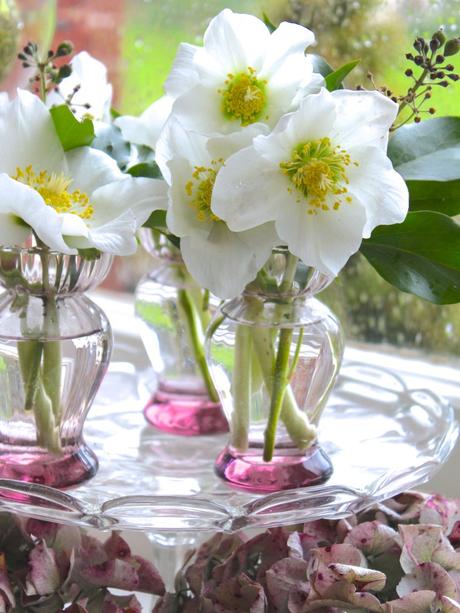
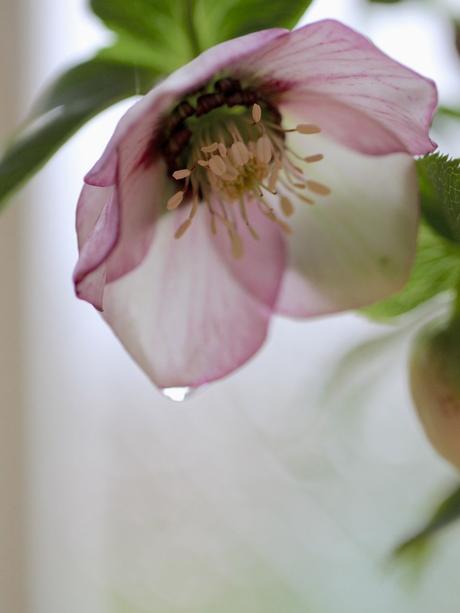
There is also the Bears foot hellebore or Stinking hellebore (H.foetidus) which has lovely hanging lime green bells and the Corsican hellebore (H. argutifolius) which is the largest of the hellebores and bears pale green cups held high above its foliage. These two varieties are on my wish list for this winter, although I have no doubt I will be entranced by one or two beautiful Lenten roses which will make their way into my collection!
I hope you have enjoyed this retrospective of photos from years gone by - I am looking forward to the return of my flowers in a week or two so that I can spend time making some new images to share in February.

It has become something of a January ritual of mine to sit down and write a post for you about the stars of my winter garden and to include a selection of photos taken in previous years whilst I wait for this years flowers to arrive. These elegant hellebores undoubtedly steal the show every winter and each time I start to write about them I realise that my love for these wintery blooms has grown even greater than it was in the previous year.
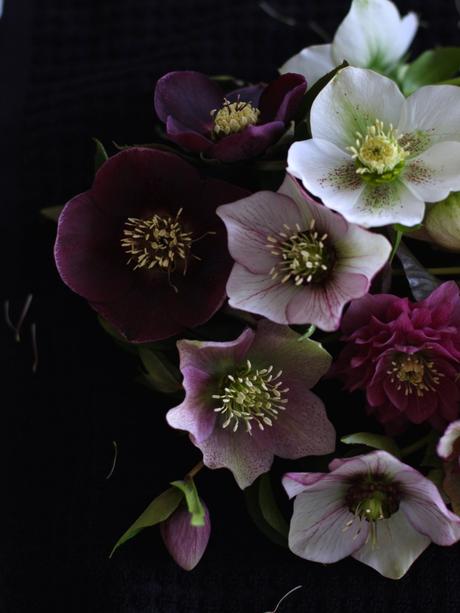
What other flower blooms at the bleakest point of the year in so many beautiful shades from darkest black to deepest plum to fresh apple green and primrose yellow through to the palest of pinks and pristine whites. Hellebores have beautiful drooping heads of single and double flowers which reveal the most exquisite markings when lifted up. These flowers are in bloom for at least 3 full months of the year - the first flowers of H. niger (the Christmas rose) appear around Christmas to be followed in late January by H. orientalis (the Lenten rose) and they are still going well into April.
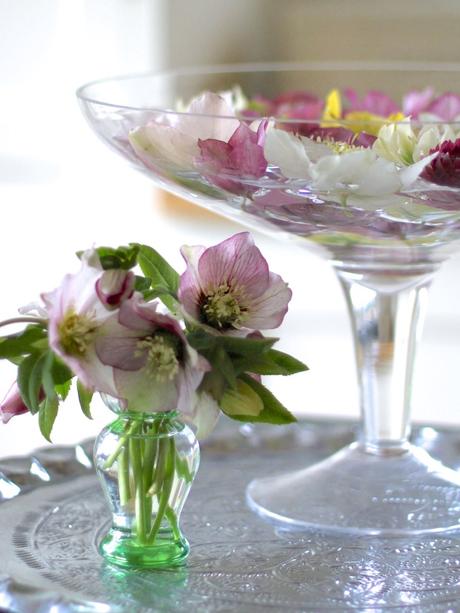
If the beautiful flowers and long flowering period have not tempted you to add hellebores to your garden what about the ease of growing? These plants are very forgiving - surviving in anything from a dry shady spot under deciduous trees to a patch in full sun. Historically hellebores have been recommended for woodland gardens as they grow well in dappled shade but my most successful clumps, which produce masses of flowers every year, actually grow in full sun. After the beauty of the flowers is over, the leaves make a very elegant foliage plant until late autumn when they start to collapse and are often covered in black spots. There is no need to worry though - just chop off all the old foliage to reveal the new season flowers and in no time at all a fresh crop of leaves will emerge to last you through another gardening year. Like peonies the clumps of hellebores will increase in size every year, giving you even more flowers and they also self seed prolifically so extra plants are easy to obtain. Added to that being poisonous they are one of the few plants in my garden that are not attractive to deers or rabbits.
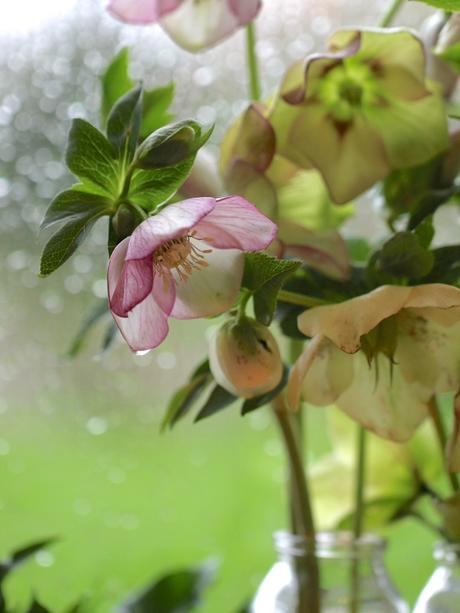
Still not convinced? How about hellebores as a cut flower? At a time of year when flowers to cut are scarce in the garden, hellebores will be your saviour. Cut them on short stems and fill a multitude of small vases to decorate a mantel or window ledge, or keep the stems long and let the beautiful flowers tumble out of urns and jugs to provide a stunning centrepiece for a table or dresser. Hellebores can start to droop very quickly when included in an arrangement but if you can cut the stems very short when they start to droop and float the flowers in a large low bowl of water you can appreciate the beauty of their markings for at least another 5 days - 2 arrangements from 1 cutting! Generally I find the doubles last longer as cut flowers than the singles - searing the stems before arranging can also help - just submerge the freshly cut stems in just boiled water for 20 seconds and immediately place them into your arrangement. The flowers will last much longer after cutting later in the season when the seed pods have started to form.

Be warned though - hellebores are very addictive. I came late to my love of these plants - only discovering their existence after I moved to Suffolk about 12 years ago. When we were living in London I was unaware of the beauty of winter flowers, considering myself a fair weather gardener. After our move to Suffolk and trips to Anglesey Abbey and Beth Chatto's Garden I discovered snowdrops and hellebores and the cold weather ceased to keep me away from my garden. These days the winter is in many ways my favourite gardening season - I love the winter light, the slow days that end with evenings by the fire and the gentle pace which allows me to appreciate each and every flowering plant without worrying that I will miss them if I am away for a day or two.

If you would like to add some hellebores to your garden borders (and how can you resist?) first prepare your planting spots very thoroughly. Hellebores will grow in any soil from chalk to clay, but they have deep root systems and they like a rich soil, so it is best to dig a good sized hole and improve the soil with organic matter before planting your new specimens. Once planted keep them well watered for their first growing season and after that they will largely look after themselves. I remove the old leaves in November, feed the plants with fish blood and bone when I remove the leaves and mulch generously around the plants during my winter tidy up. One last point - hellebore stems collapse in freezing conditions and look beyond redemption - do not be fooled - they will be as good as new again as soon as the temperature rises - these plants really are perfectly adapted to winter. There is really nothing more to looking after your new hellebores and they will reward you with an ever increasing bounteous supply of winter blooms.
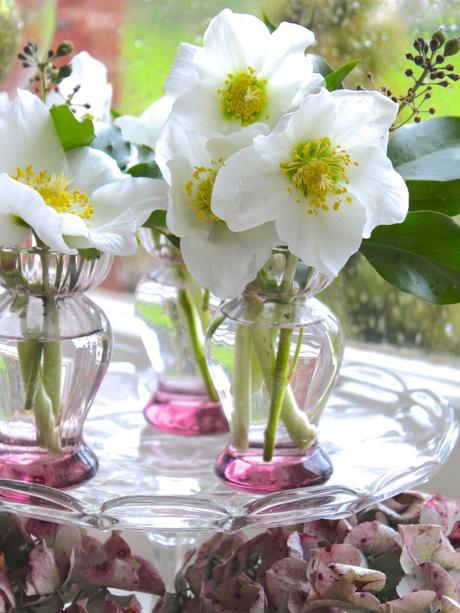
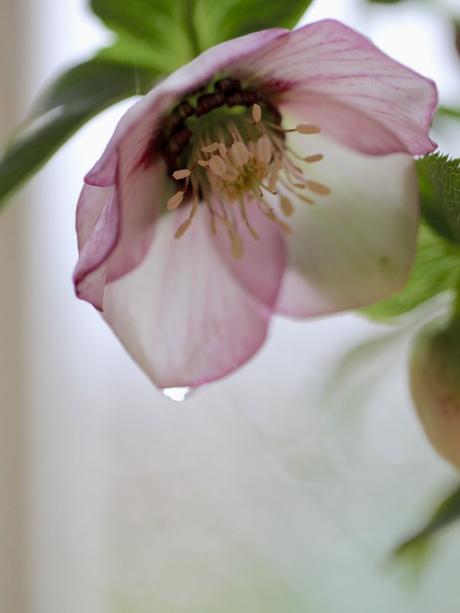
There is also the Bears foot hellebore or Stinking hellebore (H.foetidus) which has lovely hanging lime green bells and the Corsican hellebore (H. argutifolius) which is the largest of the hellebores and bears pale green cups held high above its foliage. These two varieties are on my wish list for this winter, although I have no doubt I will be entranced by one or two beautiful Lenten roses which will make their way into my collection!
I hope you have enjoyed this retrospective of photos from years gone by - I am looking forward to the return of my flowers in a week or two so that I can spend time making some new images to share in February.

